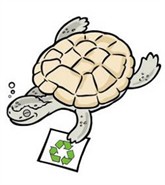
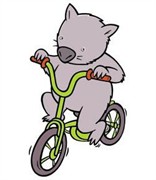
SHELLY, THE WESTERN SWAMP TORTOISE
I'm only tiny - about 15cm long - but I make up for it in age! I
usually live for about 60 years. I lost many of my relatives when
early settlers cleared our swamp homes in Western Australia for
agriculture. There are about 100 of us left in the wild but we have
to be really careful of feral species like foxes and cats. As well
as the shell on my back and the scales on my head, I've got
barbells under my chin, which help me pop my head above the water.
I lay about 3-5 eggs in November but they don't hatch until the
following winter when the swamp fills with water.
WAZZA, THE NORTHERN HAIRY NOSED WOMBAT
I'm actually bigger than you think - almost 1 metre long - and
my wife carries around my kids in a backward facing pouch. These
days it's been pretty tough having to work against drought, floods,
rabbits, cattle, sheep, land clearing, dingoes and introduced
species of grass to stay alive and feed the family! Some days I
just want to hang out in my burrow and hide from it all, but I'm
hanging in there and now that Epping Forest National Park in
Western Queensland is being fenced off, I've got a much better
chance of survival.
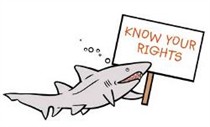
SHANE, THE GREY NURSE
SHARK
I've had a bit of bad press over the
years - people hunted me because they thought I'm a man-eater. But
the truth is I much prefer squid, fish and lobsters to humans! I am
about 3.5 metres long and usually keep to shallow coastal waters
around rocky reefs but I can swim as deep as 190 metres. Sometimes
I come up to the surface to gulp some air - but not for breathing!
I keep it in my stomach to help me float while I look for food.
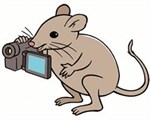
WENDI, THE WOYLIE
I'm a bit of a night owl. I sleep
during the day and spend the night hours looking for food and
decorating my nest with grass that I carry in my tail. I'm pretty
good at keeping water in the soil because I bury leaf litter and
recycle plant nutrients while I'm digging around for food. I live
mostly in Southern Australian woodlands and don't need to drink
much because I get all the moisture I need from seeds, insects,
fungi and bulbs. Feral cats and mysterious diseases have put me and
my family on the endangered list.
FABIO, THE SOUTHERN CORROBOREE
FROG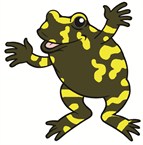
Even before the Days of the Dreaming, I was known to be fabulous!
My squelching voice could be heard across the mountainous areas of
New South Wales and the Australian Capital Territory. My name comes
from the yellow stripes that look like the ochre used by local
Indigenous people during a corroboree. Now, I'm Australia's most
endangered frog with only about 30 friends left in the wild. If
there isn't enough rain during the autumn breeding season, our eggs
won't hatch and we have to wait another year. We also have to stay
away from a nasty fungus that eats up the keratin in our skin,
stopping us from breathing (frogs use their skin to breathe!). But
all is not lost - I can be fabulous again!
KYLIE, THE SOUTHERN
CASSOWARY
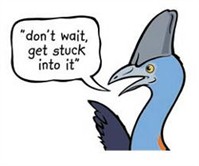
Once my children leave the nest, I
prefer to live alone and use my three toes to dig for insects and
seeds in the rainforests of Northern Queensland. I'm pretty popular
amongst the plants and animals in the local area because I transfer
seeds from one area to another. But because my numbers have dropped
due to land clearing, feral animals and traffic, I'm finding it
hard to spread seeds to replace all the trees that are cleared.
It's a relief to know that there are people planting my fruit trees
and reducing the threat of feral animals.
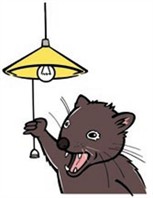
JT, THE TASSIE
DEVIL
400-year-old fossils show that my
great-great-grandparents used to live on the mainland of Australia.
But today my family and I only live in Tasmania. For a while there,
it looked a bit gloomy as people were chasing us. But in 1941 the
Government decided to protect us. We're pretty good at finding our
own food in the wild. We also keep farms and bushlands free of
blowflies by eating animal carcasses. Many of my friends are sick
at the moment. They suffer from a nasty disease, but zoos and
environmental groups are helping us to breed new populations free
of disease.